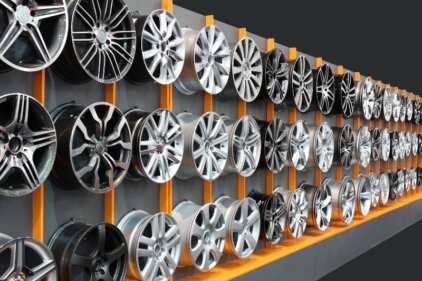In the ever-evolving world of automotive design, car prototypes have played a significant role in shaping the industry. These experimental vehicles push the boundaries of innovation, showcasing the dreams and visions of designers and engineers. Unusual car prototypes, in particular, have captivated the imagination of enthusiasts and aficionados worldwide. In this article, We will take you on a journey through the extraordinary history of these unconventional rides.
The Early Years of Car Prototypes
The birth of car prototypes can be traced back to the late 19th century, when pioneers like Karl Benz and Henry Ford were experimenting with their groundbreaking inventions. These early car prototypes were often crude and rudimentary, lacking the finesse and refinement we associate with modern vehicles. However, they laid the foundation for the automotive industry we know today.
During this era, numerous inventors and visionaries were toiling away in their workshops, striving to create the perfect automobile. These early car prototypes were unique in their designs, featuring unconventional features such as steam-powered engines, exposed wheels, and intricate handcrafted bodies. While many of these prototypes never made it into mass production, they served as stepping stones for future innovations.
Famous and Forgotten Car Prototypes
Throughout history, there have been numerous car prototypes that have captured the public’s attention. Some of them have become iconic symbols of automotive design, while others have been forgotten in the annals of time. One such example is the Ford Nucleon, a concept car from the 1950s that envisioned a nuclear-powered vehicle. Though never fully realized, the Ford Nucleon showcased the boundless optimism and futuristic thinking of its time.
On the other hand, there are car prototypes that have gained legendary status. The Lamborghini Miura, introduced in 1966, revolutionized the supercar industry with its mid-engine layout and sleek design. This prototype not only became a production reality but also set the benchmark for future generations of sports cars. The Miura’s influence can still be felt in the automotive industry today.
Unusual Features and Designs of Car Prototypes
What sets unusual car prototypes apart from their mainstream counterparts are their unconventional features and designs. These prototypes often pushed the boundaries of imagination, incorporating futuristic technologies and outlandish styling cues. Take, for example, the Mercedes-Benz F015 Luxury in Motion concept car. This prototype reimagines the automobile as a self-driving lounge on wheels, complete with a luxurious interior and advanced connectivity features.
Another noteworthy example is the BMW Gina Light Visionary Model. This car prototype challenges the traditional notion of a rigid body by using a flexible fabric skin that can change shape according to different driving conditions. These unique features not only showcase the creativity of designers but also serve as a glimpse into the future of automotive design.
The Impact of Car Prototypes on the Automotive Industry
Car prototypes have had a profound impact on the automotive industry, shaping the way we perceive and interact with vehicles. These experimental creations have paved the way for technological advancements that have trickled down to production cars. Features like ABS, airbags, and hybrid powertrains, which were once exclusive to prototypes, are now commonplace in everyday vehicles.
Moreover, car prototypes have sparked innovation and competition among manufacturers. The race to create the most advanced and groundbreaking prototype has led to significant leaps in automotive technology. Concepts such as electric and autonomous vehicles, which were once considered far-fetched, are now becoming a reality thanks to the relentless pursuit of innovation driven by car prototypes.
The Future of Car Prototypes
As we look to the future, car prototypes continue to push the boundaries of what’s possible in the automotive world. With the rise of electric and autonomous technologies, prototypes are becoming testbeds for cutting-edge advancements. Manufacturers are investing heavily in research and development, aiming to create prototypes that not only redefine the driving experience but also address the challenges of sustainability and urban mobility.
Additionally, the advent of 3D printing and advanced materials opens up new avenues for car prototype design. This technology allows for greater flexibility and customization, enabling designers to create prototypes that are not bound by traditional manufacturing constraints. The future of car prototypes holds the promise of even more extraordinary and groundbreaking designs.
Car Prototype Museums and Exhibitions
For enthusiasts and curious onlookers alike, car prototype museums and exhibitions offer a glimpse into the rich history of these extraordinary vehicles. Museums like the Petersen Automotive Museum in Los Angeles and the Cité de l’Automobile in Mulhouse, France, house extensive collections of car prototypes from various eras. These immersive experiences allow visitors to appreciate the craftsmanship and innovation that went into creating these unique rides.
Exhibitions, such as the annual International Geneva Motor Show, also serve as platforms for manufacturers to showcase their latest prototypes. These events attract industry professionals and enthusiasts from around the world, offering a firsthand look at the future of automotive design. Attending these exhibitions can be an incredibly insightful and inspiring experience for anyone passionate about cars.
Collecting and Restoring Car Prototypes
For a select group of collectors and enthusiasts, acquiring and restoring car prototypes is a lifelong passion. These dedicated individuals seek out rare and forgotten prototypes, meticulously restoring them to their former glory. These restoration projects not only preserve automotive history but also provide a tangible connection to the past.
Collecting car prototypes requires a deep understanding of automotive history and the willingness to invest time and resources into these unique vehicles. It is a labor of love that requires patience, expertise, and a genuine appreciation for the art of automotive design. For those fortunate enough to own a piece of automotive history, the joy of preserving and showcasing these prototypes is immeasurable.
The Fascination with Unusual Car Prototypes
What is it about unusual car prototypes that captures our imagination? Perhaps it’s the allure of the unknown, the excitement of witnessing a vehicle that defies convention and challenges our perceptions. Unusual car prototypes represent the pinnacle of creativity and innovation, embodying the dreams and aspirations of designers and engineers.
Moreover, these prototypes offer a glimpse into what the future might hold. They spark excitement and anticipation, fueling our desire for progress and improvement. Unusual car prototypes remind us that the possibilities are endless, that there are still uncharted territories waiting to be explored in the world of automotive design.
Conclusion
Unusual car prototypes have left an indelible mark on the automotive industry, shaping the way we think about and interact with vehicles. From the early pioneers to the futuristic concepts of today, these extraordinary rides have captivated our imaginations and pushed the boundaries of innovation. As we look to the future, car prototypes continue to inspire and excite, promising a world where the extraordinary becomes the norm. So, the next time you come across an unusual car prototype, take a moment to appreciate the creativity, ingenuity, and sheer audacity that went into its creation.





